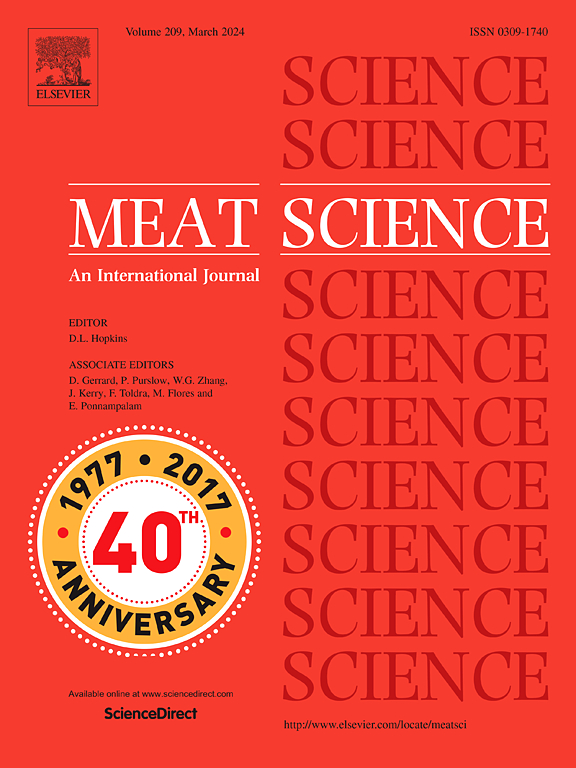Characterization of a novel phage PFX2 and its preliminary application in the biocontrol of Pseudomonas fluorescens biofilms on fresh beef
IF 6.1
1区 农林科学
Q1 Agricultural and Biological Sciences
引用次数: 0
Abstract
Pseudomonas fluorescens is the primary spoilage microorganism in meat products, known for its robust biofilm-forming ability and causing significant food safety risks. This study aimed to investigate phage-based decontamination of Pseudomonas fluorescens on beef. A novel lytic phage PFX2 was isolated and characterised, which exhibits high host specificity and maintains its lytic ability under harsh environmental conditions. In the bacteriostatic experiment, phage PFX2 could significantly inhibit P. fluorescens growth at both 4 °C and 25 °C in beef. Phage PFX2 inhibited biofilm formation by 81.53 % when co-cultured with bacteria for 18 h. Additionally, after 2 h of exposure to phage PFX2, mature biofilms were reduced by 97.52 % and 99.80 % on beef and glass surfaces, respectively. Furthermore, microscopic observation validated phage PFX2 base biofilm removal from beef and processing equipment surfaces. These findings indicate that PFX2, as a novel lytic phage, has the potential to control P. fluorescens, particularly its biofilm-associated contamination.
新型噬菌体PFX2的鉴定及其在鲜牛肉荧光假单胞菌生物膜防制中的初步应用
荧光假单胞菌是肉制品中的主要腐败微生物,具有强大的生物膜形成能力,具有重大的食品安全风险。本研究旨在探讨以噬菌体为基础的牛肉荧光假单胞菌去污方法。分离并鉴定了一种新的噬菌体PFX2,该噬菌体具有较高的宿主特异性,在恶劣的环境条件下仍能保持其裂解能力。在抑菌实验中,噬菌体PFX2在4°C和25°C条件下均能显著抑制牛肉中荧光杆菌的生长。与细菌共培养18 h后,噬菌体PFX2对生物膜形成的抑制作用为81.53%。此外,在暴露于PFX2 2 h后,牛肉和玻璃表面的成熟生物膜分别减少97.52%和99.80%。此外,显微镜观察证实了噬菌体PFX2基生物膜从牛肉和加工设备表面去除。这些发现表明,PFX2作为一种新型的裂解噬菌体,具有控制荧光假单胞菌,特别是其生物膜相关污染的潜力。
本文章由计算机程序翻译,如有差异,请以英文原文为准。
求助全文
约1分钟内获得全文
求助全文
来源期刊

Meat Science
工程技术-食品科技
CiteScore
12.60
自引率
9.90%
发文量
282
审稿时长
60 days
期刊介绍:
The aim of Meat Science is to serve as a suitable platform for the dissemination of interdisciplinary and international knowledge on all factors influencing the properties of meat. While the journal primarily focuses on the flesh of mammals, contributions related to poultry will be considered if they enhance the overall understanding of the relationship between muscle nature and meat quality post mortem. Additionally, papers on large birds (e.g., emus, ostriches) as well as wild-captured mammals and crocodiles will be welcomed.
 求助内容:
求助内容: 应助结果提醒方式:
应助结果提醒方式:


